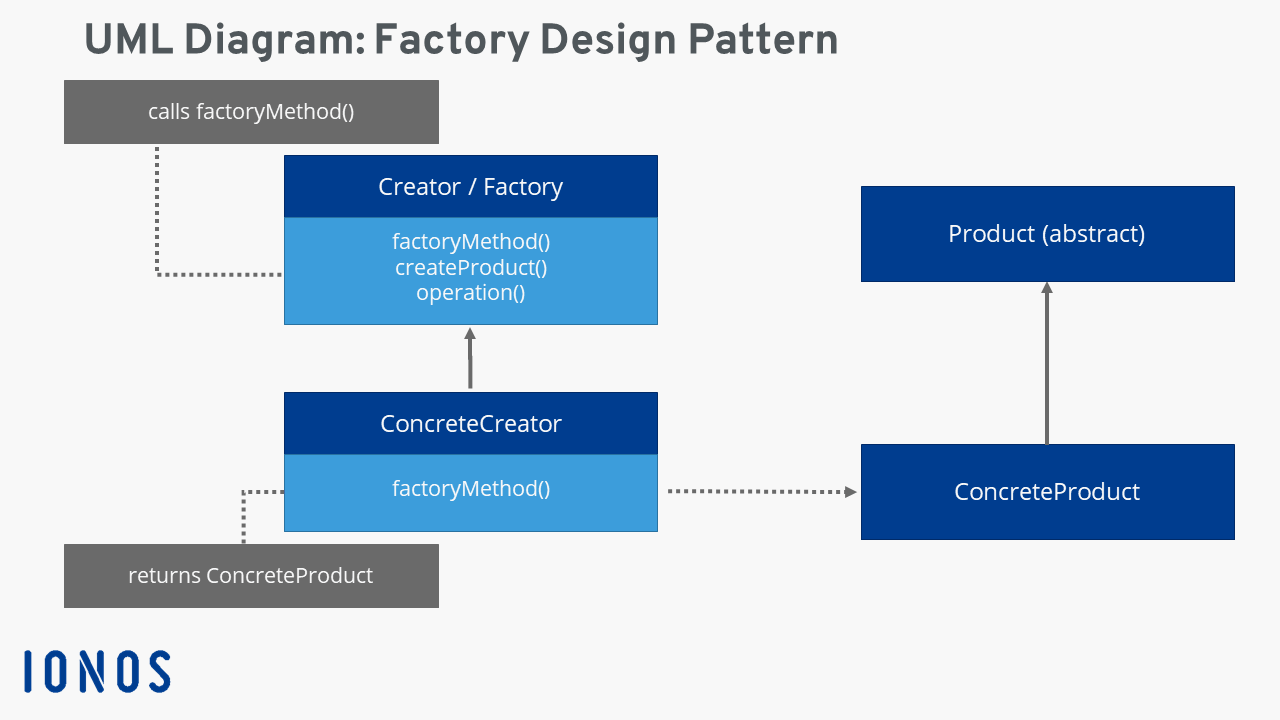Table Of Content

AccountFactory takes an AccountType as input and returns a specific BankAccount as output. The Factory Method defines a method, which should be used for creating objects instead of using a direct constructor call (new operator). Subclasses can override this method to change the class of objects that will be created. Super class in factory design pattern can be an interface, abstract class or a normal java class.
Swimwear Development Studio
The abstract creator class, ShapeFactory, declare a pure virtual function createShape(), which will be implemented by concrete creators to create specific shapes. So far we learned what is Factory method design pattern and how to implement it. I believe now we have a fair understanding of the advantage of this design mechanism. Factory methods pervade toolkits and frameworks.The preceding document example is a typical use in MacApp and ET++.
Fashion Camp
Also, create two implementation classes JavaDeveloper and CppDeveloper classes. After you’ve created your account, you will start the competition right away. As a result, you can easily call MakeProduct() from it to get the IProduct. You might also write your custom logic after getting the object in the concrete Factory Method.
Creational Software Design Patterns in Java

The factory design pattern says to define an interface ( A java interface or an abstract class) for creating the object and let the subclasses decide which class to instantiate. Room is the base class for a final product (MagicRoom or OrdinaryRoom). MazeGame declares the abstract factory method to produce such a base product.
What is the Factory Method Design Pattern in Java?

However, we can help you meet these demands, no matter where you are in your journey. The client code has to work with both factories and products via their respective abstract interfaces. This lets you change the type of a factory that you pass to the client code, as well as the product variant that the client code receives, without breaking the actual client code. Now let's explore the ways to implement the Factory design pattern together. From the class diagram, coders can easily see that the implementation for Factory is extremely straightforward.
Step 2
We are a vertically-integrated studio located in L.A.’s Art District focusing on quality, high-end clothing. From production management to pattern making services in Los Angeles, we have experts who can assist you from start to finish. The second step is knowing what to bring or take into your pattern maker. Professional sample technicians will likely understand your design from the get-go but will ultimately need your continued input and commitment to your vision along the way. To master the Factory Design Pattern in Java, it's beneficial to collaborate with seasoned professionals. Saigon Technology, with its expertise in Java development, provides robust solutions that can help streamline your software development process.
How Christian Siriano Turned His Fashion House Into a Mask Factory - The New Yorker
How Christian Siriano Turned His Fashion House Into a Mask Factory.
Posted: Tue, 31 Mar 2020 07:00:00 GMT [source]
When a static creation method returns new objects it becomes an alternative constructor. In the above example, the abstract class SpaceConstructionFactory is a factory that defines the family of objects. With the help of the composition, we have determined that the customer class and factory derived classes are dependent on each other. The most important element of the abstract factory is the customer class. Using the composition, we create a class containing the appropriate factory. This implementation is much more convenient than the previous implementation.
Factory Design Pattern Diagram
Let’s create an implementation of a method whose task is to return a specific developer factory depending on the programming language. This Design Pattern promotes code reuse and loose coupling between classes making our code more modular and easier to maintain. It enables us to create objects without knowing the implementation details of our classes. Of course, you can apply this approach to other UI elements as well. However, with each new factory method you add to the Dialog, you get closer to the Abstract Factory pattern. Sew FYI promotes sewing by providing instruction, inspiration, and encouragement to designers of all experience levels.
Getting Ready to Work With a Pattern Maker in Los Angeles
Python Tutorial: Connect Government Data API's By Using The Factory Pattern - Towards Data Science
Python Tutorial: Connect Government Data API's By Using The Factory Pattern.
Posted: Fri, 15 Feb 2019 10:04:34 GMT [source]
In this article, we will explore the Factory Design Pattern in detail and look at its various use cases and implementation techniques. The Factory Design Pattern in C++ involves using a base class or interface with a virtual method for creating objects. Derived classes can override this method to create different object types based on client requirements. This pattern promotes flexibility and extensibility by letting subclasses decide which class to instantiate.
It encapsulates the object creation logic in a separate method, abstracting the instantiation process and promoting loose coupling between the creator and the created objects. This pattern enables flexibility, extensibility, and maintainability in the codebase by allowing subclasses to define their own implementation of the factory method to create specific types of objects. The factory design pattern says that define an interface ( A java interface or an abstract class) and let the subclasses decide which object to instantiate.
If you’re looking for a pattern maker, Los Angeles-based experts from The Evans Group (teg) are here to assist. We have more than a decade’s worth of experience helping emerging and independent fashion designers see their collections come to life. The first thing the Abstract Factory pattern suggests is to explicitly declare interfaces for each distinct product of the product family (e.g., chair, sofa or coffee table). Then you can make all variants of products follow those interfaces. For example, all chair variants can implement the Chair interface; all coffee table variants can implement the CoffeeTable interface, and so on. Also, you don’t want to change existing code when adding new products or families of products to the program.
This allows for flexibility in object creation and promotes loose coupling between the creator (client code) and the concrete products. In software engineering, creational design patterns are design patterns that deal with object creation mechanisms, trying to create objects in a manner suitable to the situation. The basic form of object creation could result in design problems or added complexity to the design. Creational design patterns solve this problem by somehow controlling this object creation. Concrete Creator classes are subclasses of the Creator that implement the factory method to create specific types of objects.
The Factory Design Pattern is a powerful technique for flexible object creation. By encapsulating the creation logic in a factory class, we achieve loose coupling and enhance the maintainability of our code. In the string conversion example, we demonstrated how the Factory Design Pattern allows us to switch between different conversion types easily. This pattern promotes modularity, extensibility, and code reusability, making it a valuable tool in software development. You are developing a software system for an e-commerce platform that deals with various types of products. Each product category (e.g., electronics, clothing, books) requires specific handling during creation.


No comments:
Post a Comment